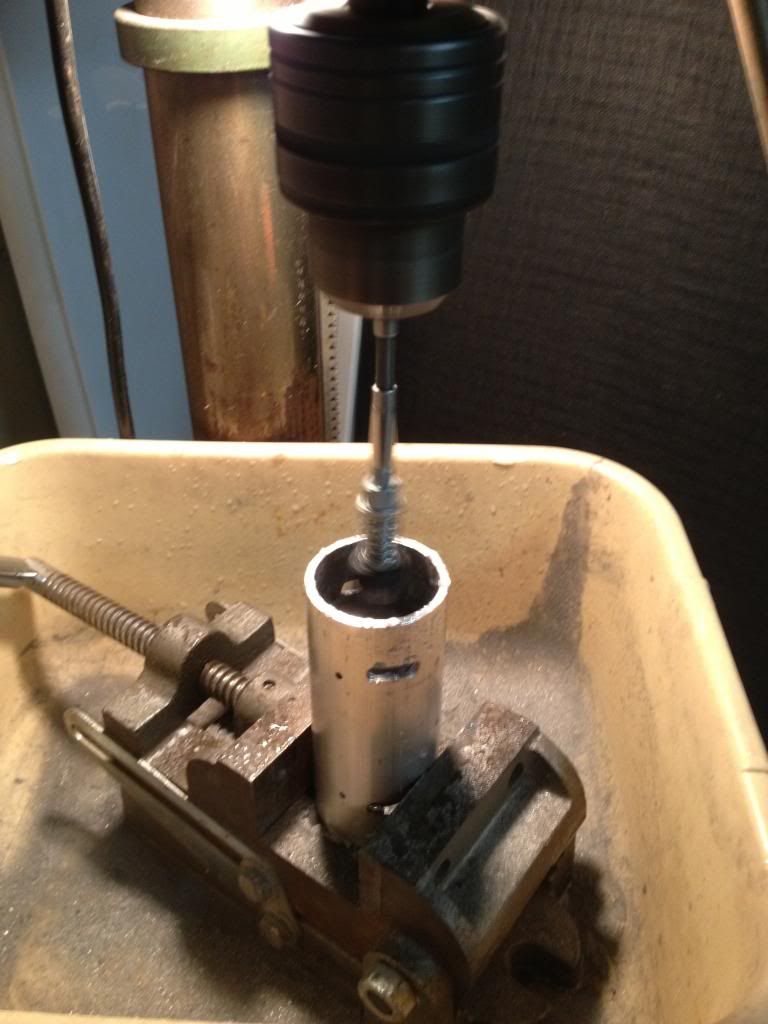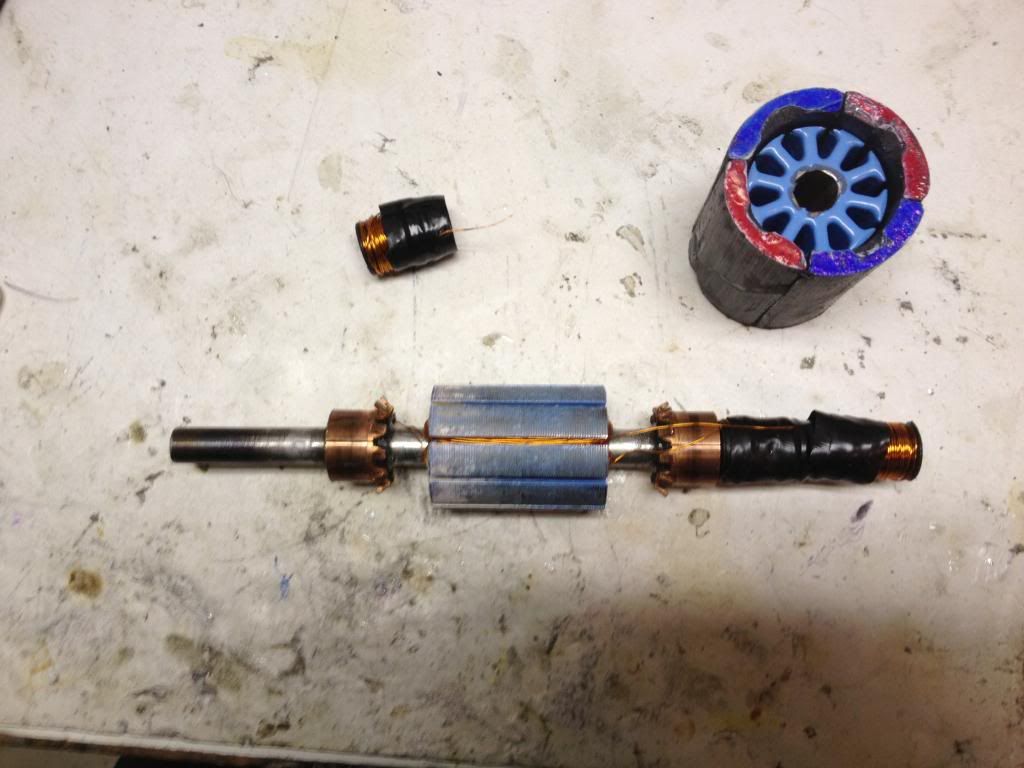Hello folks
Finally have a chance to write more.
Good. Previous I ran motor/gen with 48v constant dc, rpm about 4100, 1000 watts lowered rpm to 3600. So then I was hoping 72v constant dc would run the setup at 6000 rpm, still 500 rpm/1000watts out. Unfortunately, 72v constant dc only did 5000 rpm, @ 72 amp input. 1000 watts one side lowered rpm by 500, input amps was at 70. Other side 1000 watts lowered rpm by 500, input amps was at 69, it was getting quite warm. I stopped testing. But still 500 rpm/1000watts out.
So, if we can get the rpm to 6500 at less then 72 vin, at less then 69 amps in, with gen unloaded, I won't have to buy more batteries. , and we will know its beat, before we load gen.
, and we will know its beat, before we load gen.
I was also only using p1 and p15 in parallel. p8 and p22 fed caps (20 volts held constant, while running home made 5 pole). Dana has shown us how low the amps are going to be when pulsing.
Yes, and they are less then 10 bucks at digikey now, I thought they were 20 bucks before. I shorted out my heat sink to a power pin. I only lost one fet though. It's running now, running good. It's all set up on motor to start testing at 12v, I won't be free till Friday to sit down and test. I'm very excited to try this setup.
@Koggs
Hello Koggs. You are right that coils will get larger, as spiral get bigger and that will unbalance rotor. But that is as per UFO's guidelines. More Asymmetry.
@ Lightworker
Hey Lightworker
I've been catching up on posts. Thank you Light, You have been doing a lot of work, Its going to be very helpful. Have a good night, I'm crashing too.
Machine
Finally have a chance to write more.
@ Machine, You better believe that by pulsing WILL reduce draw...and still be able to withstand Generator demand...way different than linear feed my friend!
So, if we can get the rpm to 6500 at less then 72 vin, at less then 69 amps in, with gen unloaded, I won't have to buy more batteries.
 , and we will know its beat, before we load gen.
, and we will know its beat, before we load gen.I was also only using p1 and p15 in parallel. p8 and p22 fed caps (20 volts held constant, while running home made 5 pole). Dana has shown us how low the amps are going to be when pulsing.
Are You using the FET's as per JS Monster spec's?
@Koggs
Hello Koggs. You are right that coils will get larger, as spiral get bigger and that will unbalance rotor. But that is as per UFO's guidelines. More Asymmetry.
@ Lightworker
Hey Lightworker
I've been catching up on posts. Thank you Light, You have been doing a lot of work, Its going to be very helpful. Have a good night, I'm crashing too.
Machine







 What the heck is going on over there. Broom handles and melting witches? Oh, you said switches, my bad... You do have something, if you were pulsing, shorted thru. That still sound vary high for straight linear. Please be careful, your one of the last real crazy workers we have.
What the heck is going on over there. Broom handles and melting witches? Oh, you said switches, my bad... You do have something, if you were pulsing, shorted thru. That still sound vary high for straight linear. Please be careful, your one of the last real crazy workers we have. 


Comment